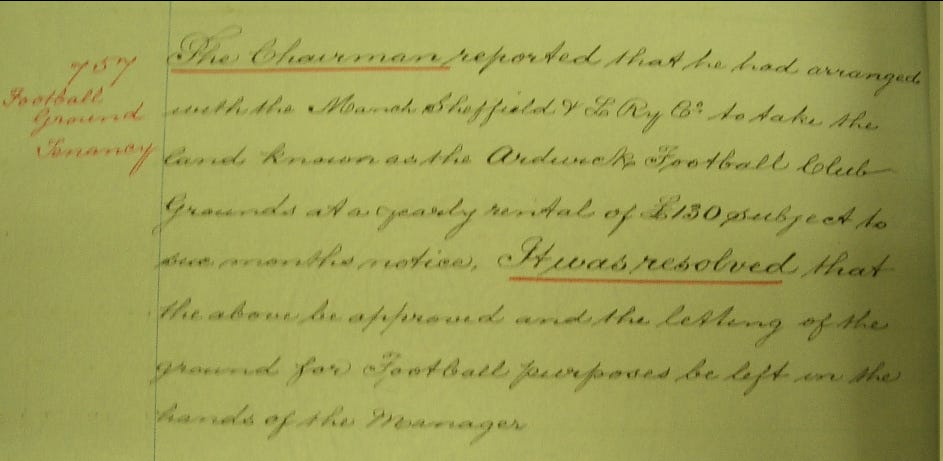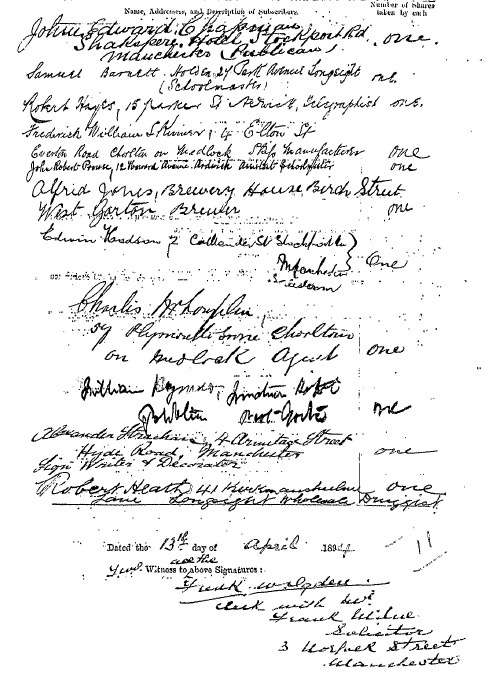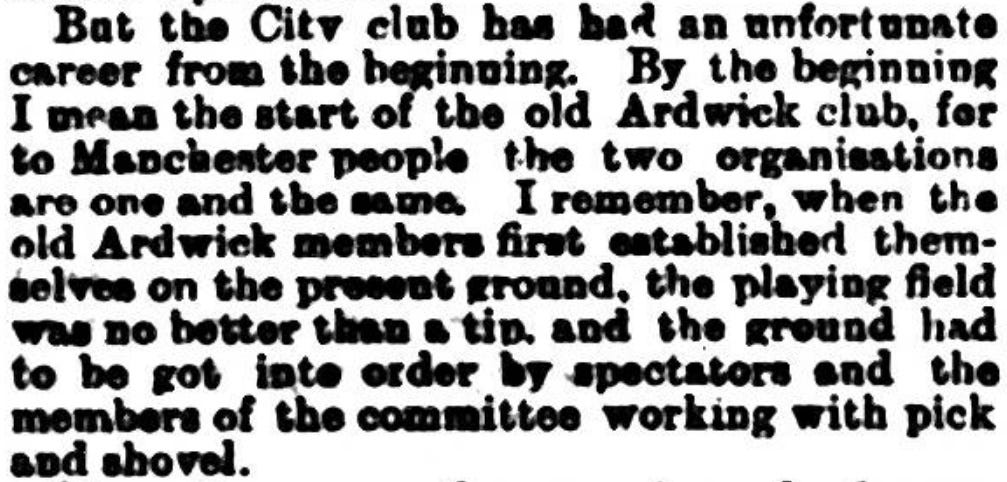The Birth of Football and the Origins of Manchester City
Twenty-four: 1894 And All That
The issue of our formation date has been the subject of much debate over the years—to the point where even fans on City talkboards now seem fed up of discussing it.
Personally, it does annoy me a little that the date on our badge puts us two years younger than Liverpool FC, particularly as its founder, John Houlding, appears to have pinched the idea off our very own Stephen Chesters Thompson (both were brewers, Tory activists and prominent Freemasons—and both were locally referred to as “kings”).
That said, I am far more concerned about how we’re going to deal with the low block next season. However, I do live in hope that, at some point, people at the club will sit down and agree on a formation date we can stick with.
A couple of years ago I published a piece on here call 1894 Explained. I doubt it made much difference, but I’m republishing part of it below, in the (probably vain) hope that it might at least spark a little debate.
On 4 April 1894 a group led by pub landlord John Chapman, applied for affiliation to the Lancashire FA under the name ‘Manchester City’. The application was rejected after the Ardwick FC committee, led by physiotherapy pioneer John Allison, officially opposed it. However, the Lancashire FA informed the new group that their application would be accepted if they secured a ground.
Soon after, Chesters Brewery took over the lease to Ardwick’s Hyde Road ground after it had expired. It was then left to brewery manager William Cahill to decide which faction to sub-let it to.
On Friday 13 April, Cahill agreed to sub-let Hyde Road to Chapman’s group.
It wasn’t a surprising choice. Three members of Chapman’s group were involved in the drinks trade, including William Heywood, who was landlord of Chesters’ Junction Hotel on Hyde Road. As part of the deal, the brewery would later be given a 14.3% stake in the club as well as the exclusive rights to ‘supply all the wines, spirits, beers etc’ at the ground.
That evening, a triumphant Chapman presided over a meeting at the Octogon Congregational Schoolroom, Ardwick, where a motion to form The Manchester City Football Club Company Limited was passed unanimously.
Eleven £1 shares, out of its £2,000 share capital, were initially issued, and a Memorandum of Association signed.
The Ardwick committee immediately threw in the towel.
At a public meeting held on the Sunday it was announced that Allison’s faction had abandoned its opposition to the changes. The next day the new company was registered at Companies House.
After the application for affiliation to the Lancashire FA was formally approved on 21 April, the Manchester City Football Club Company opened its subscription list. On 18 May, 700 £1 shares were issued.
As the club had finished third from bottom of the Second Division, it was forced to apply for re-election at the Football League’s annual meeting on 21 May. Joshua Parlby, a seasoned political operator who had resigned as Ardwick secretary in March, represented City as their newly-appointed secretary.
With the club now debt-free and with £600 raised from the share issue (the brewery got theirs for free along with their exclusive rights), Parlby could now boast about the club’s healthy finances.
With a proven fanbase and large ground—and the backing of a giant brewery—City comfortably retained their League status.
The new legal structure did mean the club no longer held the players’ registrations. But it only cost £250 for Parlby, a former cattle trader, to put a squad together that summer. City even had enough money for ground improvements. On 15 August it was announced that,
‘the running track has been done away with and the playing portion enclosed with wooden railings, which will effectively prevent anyone encroaching on the field of play. The portion allotted to the spectators has been banked up all round, and will compare very favourably with the grounds of other League clubs.’
The running track was probably something Allison—who organised athletics events at the ground—and Chapman had been arguing about since it was installed in 1890. But with Hyde Road’s capacity now increased from 11,000 to 15,000, and with the League raising the minimum entrance fee for the 1894-95 season from 3d to 6d, the club’s new owners were looking forward to bumper profits.
So was City a new club?
On paper, yes. In the same way that Rangers was a new club on paper in 2012. But no Rangers fans would argue their club was only 11 years old. And the United fans who proudly display their Norwich scarves would certainly not date their club’s origins to 1902, when the creation of a new ownership structure resulted in a change of name (and the removal of their ground’s running track).
At the start of the 1894-95 season, the same fans went to the same ground to watch a team managed by the same man. Their Hyde Road club was run, in the main, by the same people with financial ties to the same brewery.
As The Umpire, a sporting newspaper published in Manchester, explained: ‘the two organisations are one and the same’.
It was just a different shade of blue.
My book on City’s origins, A Man’s Game, is available on Amazon here.
What was the first song at City? Why did Steve Coppell resign? Did City have a “Fifth Column”? Did the IRA try to burn down Hyde Road? Who started the “banana craze”? And what was Maine Road's Scoreboard End called before there was a scoreboard?
All these questions—and more—are answered in my latest book, available on Amazon here.
You can subscribe for free, below, and have the latest stories sent straight to your inbox.









Excellent once again, yes the city origin date of 1894 was always an odd one imho . Man Utd celebrated their centenary in 1978 as I recall but they were still Newton heath back then and the actual association football bit didn’t start until a year or two later I am led to believe .?thanks again for the great reading